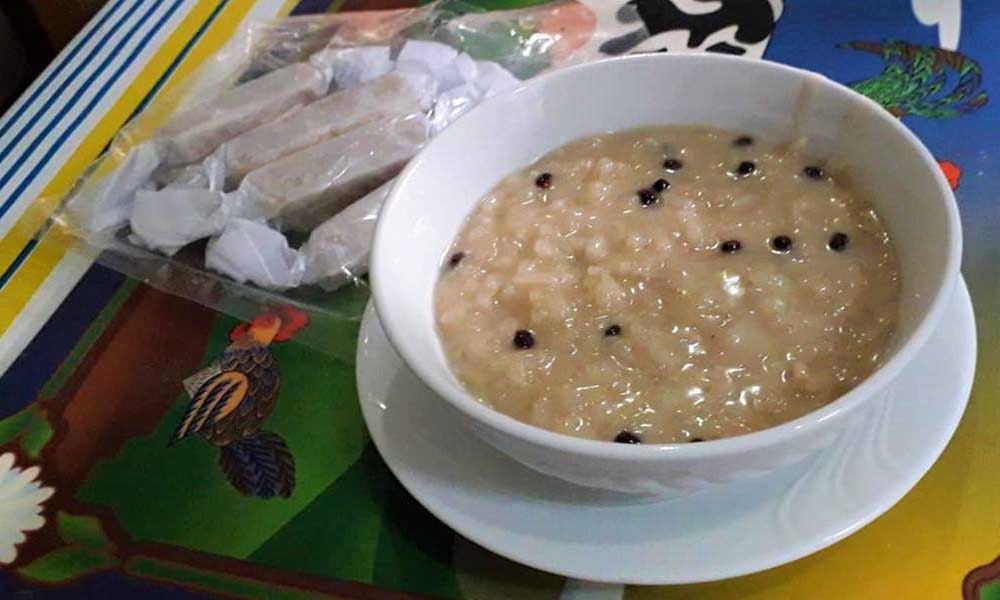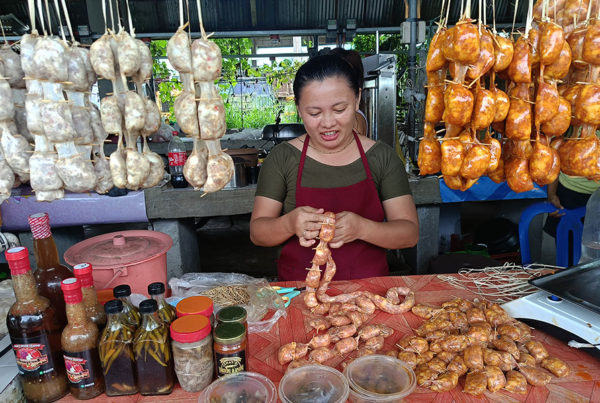
Lelot balatong diary: a culinary chronicle

By Rex Catubig
AS the monsoon month gives way to longer rainless afternoons, at around three o’clock in our tranquil barrio of Calmay, across the river from baley, we kids are routinely roused from our mandatory nap by the sonorous shout of an itinerant vendor. The old woman whom I remember only by her prefix of respect, either Nana or Bai, would sneak past the labyrinthian pathways that border the houses, selling her foodstuff.
She carries a humongous banga wrapped in cotton cloth to keep its content hot, and ensconced in a buksot which she balances on her head, cushioned by her hair that’s rolled into a bun, then crowned with coiled cloth for added padding.

Shouting in sing-song that’s a clarion call to us barrio kids as the ring of the sorbetero handbell is to city kids, she would proclaim her comestible with a lilting come-on: “Lelot, ampeta-petang! Lelot kayod tan! Lelot, it’s piping hot! (Hey there, come on get some!).
We would jump up from the ikamen, run to the banggera to take our enamel-coated losa and lipong, climb down the bamboo steps and rush outside the yard clutching tinggal coins in our clenched fists, then holler: “Mangaliw kami pa!” (We’d like to buy some!).
Putting down the clay pot, she would ladle up the sweetened glutinous rice cooked in coconut cream and speckled with toasted mung beans and fill our enameled tin tumbler and sartin bowls. Then from a pouch belted on her waist, she would whisk out a Marca Demonio gin bottle filled with fresh pinespes coconut milk, with its tansan cap punched with a hole. She would give it a vigorous shake to emulsify its content then drizzle our portion with the coco cream forming a web pattern. (Years hence, we see this cream art in artisan coffee served in coffee shops).

Pulling out our spoons clipped inside the garter of our shorts, we would scoop our reward for good behavior, from our losa and yaong and slurp the hot thick gooey gruel as we scurry back to the house.
The next day, our nanang would again order us to “ogip la”, after partaking of ugto. We would readily comply and spread the ikamen on the bamboo slatted floor of the adjacent room to the comedor. But as we lie down and summon sleep, with half-closed eyes we wonder what Bai would be bringing this time. Kiniler, masikoy, onda-onday, or butsi maybe? Or panara! Hope the nap is over soon.
 Our childhood naptime in the barrio revolves around pondering these gastronomic profundities. I never have hunger pangs, the stomach has no time to growl. The smell of down-home rural confections wafts ever so close as you wake up, promising gratification. Thanks to the diligent village culinary artisans who cook these heirloom merienda fare and ensure that children’s cravings are satisfied. Thus, no one is “narasan no ngarem” before pandem is served.
Our childhood naptime in the barrio revolves around pondering these gastronomic profundities. I never have hunger pangs, the stomach has no time to growl. The smell of down-home rural confections wafts ever so close as you wake up, promising gratification. Thanks to the diligent village culinary artisans who cook these heirloom merienda fare and ensure that children’s cravings are satisfied. Thus, no one is “narasan no ngarem” before pandem is served.
It’s what a barrio culinary memory is made of, “like water for chocolate”. Bubbling passion for thick, creamy, and gooey goodness like lelot balatong or any variation of seductive sticky snacks lovingly concocted in neighbors’ clay dalikan fired with tungon kiew.
There is no hambergyer. It’s not found on the barrio’s recipe book of culinary love.
Share your Comments or Reactions
Powered by Facebook Comments









